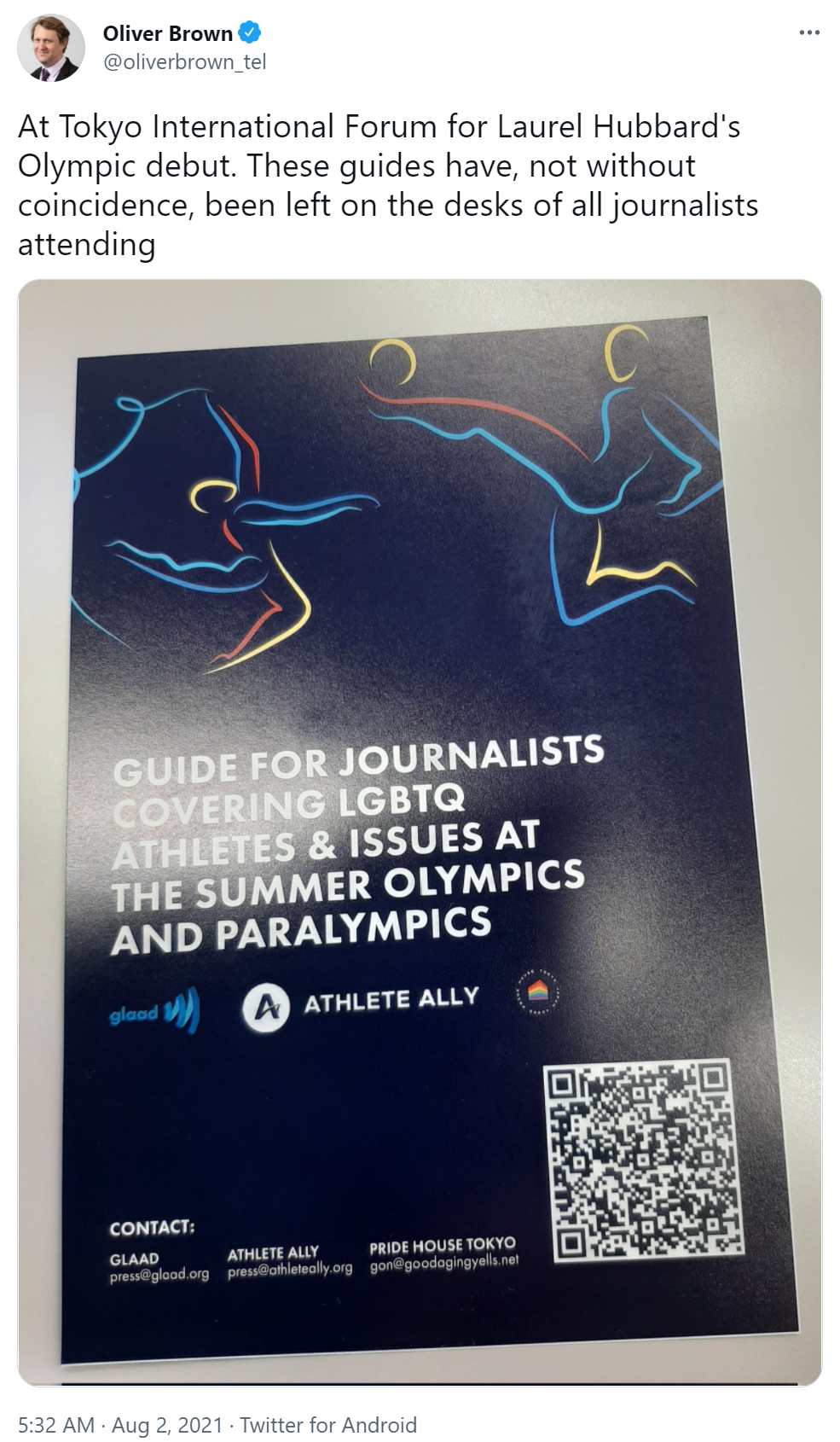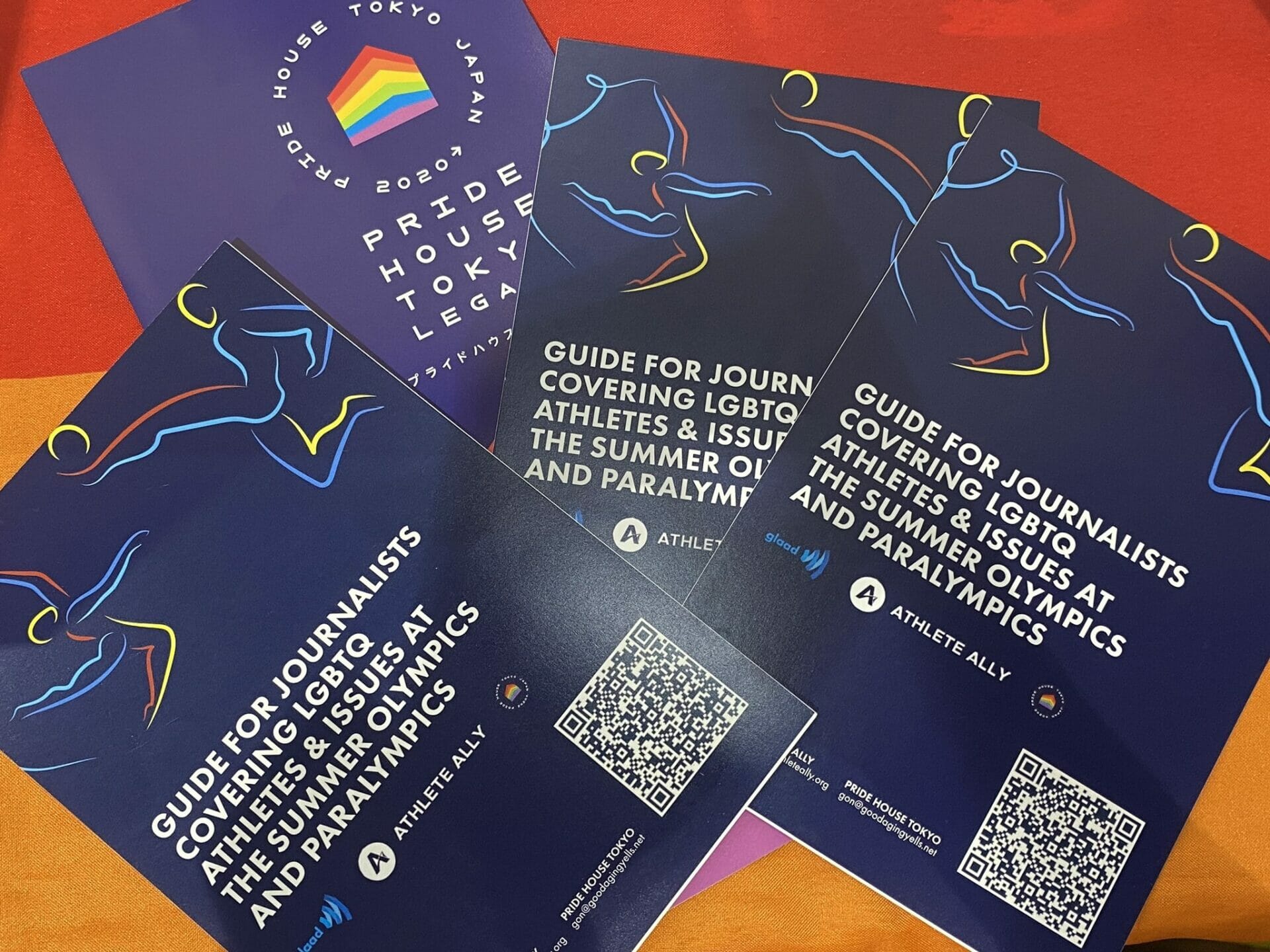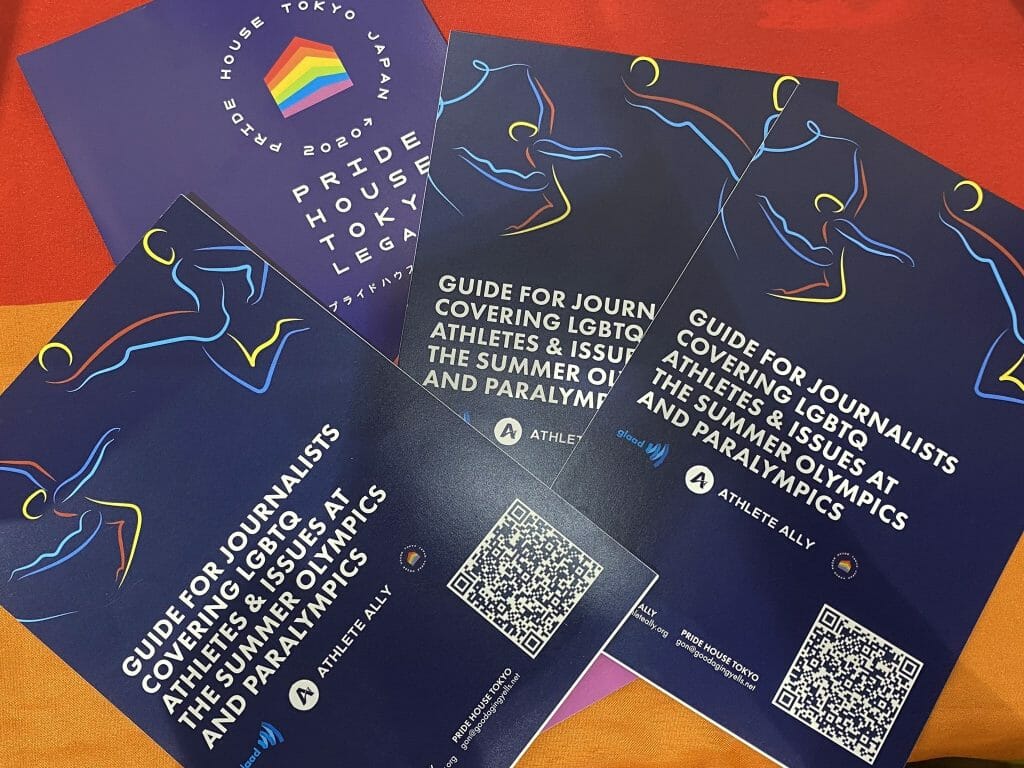GLAAD’s media-shaping work was in full swing during the Summer Olympic Games, held in Tokyo. According to Outsports, over 170 out LGBTQ athletes were at the Tokyo games, making these the most inclusive Olympic games in history and tripling the Rio Games just four years ago. Also, for the first time, out transgender and non-binary Olympians competed, making history, and impacting media coverage on transgender athletes at all levels. The Tokyo games were history-making, from an LGBTQ perspective, from the participation of the first transgender athletes in Olympic history, to Sue Bird’s flag-bearing, to LGBTQ athletes using their medals as a way to call for human rights in their countries.
GLAAD’s goal was to help journalists tell the story of LGBTQ athletes fairly, accurately, and inclusively. With our partners at Athlete Ally and Pride House Tokyo, GLAAD produced a “Guide to Covering LGBTQ Athletes at the 2020 Olympics and Paralympics” as a resource to journalists and media professionals. The guide was released to the public as a PDF and made available to journalists in Japan via QR code, available at Pride House Tokyo and at various venues.
The guide became especially relevant and popular when it was made available to journalists attending a media roundtable to discuss New Zealand Olympian Laurel Hubbard, the first out transgender athlete to qualify for the Olympics and Paralympics in the 17 years since the Olympics have formally welcomed trans inclusion. The roundtable was hosted by the International Olympic Committee in Tokyo, and included officials from the International Weightlifting Federation and New Zealand Olympic Committee as well as a written statement from Hubbard herself.
Renewed attention to the guide blossomed when Telegraph reporter Oliver Brown shared a tweet noting that the guide helping journalists fairly and accurately report on LGBTQ athletes had been included at a press event about a transgender athlete.

Brown’s tweet triggered up anti-transgender activists, who pounced on his tweet to amplify their own messages of harassment against transgender people. GLAAD has been addressing online harassment in the Social Media Safety Index, and this case became a textbook example of how anti-transgender hate speech can start from a verified person who uses coded language, but can lead to a cesspool of increasingly hostile and harassing language. Several New Corp owned outlets ran stories about the guide. These stories attempted to frame the guide and its distribution a scandal, in the same way that outlets and anti-LGBTQ activists have attmpeted to paint transgender participation in sports as a scandal.
In the end, all this sharing got the guide viewed and used by more journalists, LGBTQ advocates, and everyday people. On the day of Laurel Hubbard’s competition, downloads from the sharable QR code spiked from a few each day, to over 160 scans. This doesn’t count downloads from GLAAD or Athlete Ally’s websites.
Not all the amplication was negative, however. LGBTQ athletes, including American shot putter and silver medalist Raven Sauders also shared the Olympic guide in press kits.

The Olympic guide will continue to be useful to journalists who are covering the LGBTQ athletes competing in the Paralympic Games. GLAAD, Athlete Ally, and Pride House Tokyo will continue to monitor coverage, cheer on the athletes, and ensure that LGBTQ athletes are reported on fairly, accurately, and inclusively.
GLAAD will be ready with an updated guide to cover the LGBTQ athletes competing in the Winter Games, which are only six months away in Beijing, China.We will continue to amplify LGBTQ athletes at all levels of participation, and oppose efforts to limit their competition.
Congratulations to all the LGBTQ Olympians who have inspired a new generation of athletes and advocates.













